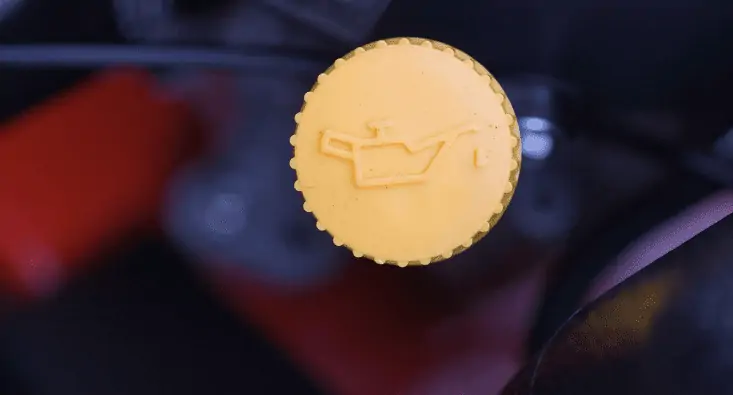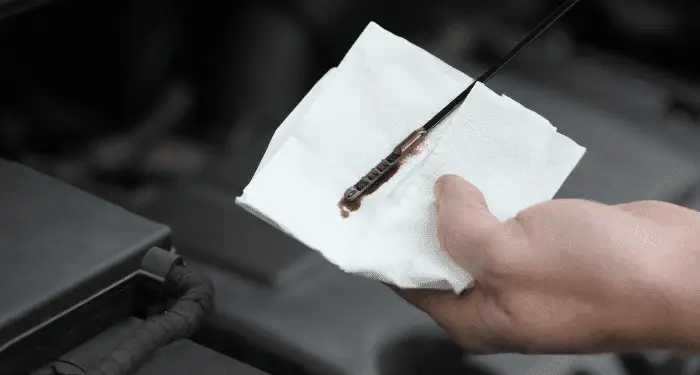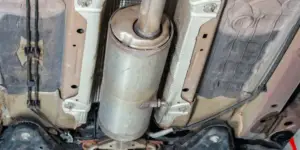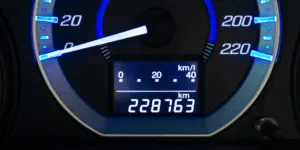If you did your oil change correctly, nothing should cause the check engine light to come on.
Has it happened immediately as soon as you left the car shop, or has it been a few hundred miles since? It could be pure coincidence that your check engine light has come on.
Oil Needs To Circulate After An Oil Change
After an oil change, any good car shop will run your car to get the oil circulating through your engine. This normally happens when they start your car to move it to a parking area. If they changed the oil in their parking area rather than the workshop, your car might not have been started and just left for you to collect. Unprofessional though!
However, if you have done an oil change yourself at home, it can be worrying to see the check engine lights come on.
As long as it goes off within a couple of seconds, all is well. It takes this long for the oil to circulate through your engine and give correct readings to your engine’s computer – The ECU.
Should the check engine light remain on after a couple of seconds, you may have inadvertently done something wrong.
If the oil pressure light remains on then we’ll explore the reasons here:
Oil Cap Not on Properly – Sucking in Air
The first place to look would be the oil cap. It’s a most obvious place. It’s possible to put on the oil cap back ways creating a vacuum leak which allows more air in.

Your car’s engine is designed to combust the air and fuel mix within certain parameters—excess air in your engine will result in an erroneous reading being sent back to your ECU. It’s likely your car is running rough too.
Correct Oil Grade
Not all oil grades are the same. There are 11 oil grades in total from 0 w you up to 60 w. The W relates to the oil weights. If you have filled with the wrong grade oil, this can cause lubrication and temperature errors. These wrong readings will be sent back to the ECU, and the check engine light will come on to highlight a problem.
If you think the wrong engine grade oil has been used, don’t drive the car. drain out the oil, flush it through and use the right grade.
If you still have the empty bottle check the grade of oil against your car manufacturer’s guidelines. If you took your car to a shop for the oil change check any paperwork they gave you or phone and query the grade.
Badly Fitted Oil Filter
An oil filter is changed as part of standard maintenance. Old filters are screwed off and new filters are screwed on. As with the oil filler cap, if the oil filter is not seated correctly it could cause a vacuum leak and allow air into the system.
Check for oil leaks around the filter, if you see none this indicates the oil filter is seated correctly. However, if you do notice oil around the filter and you fitted it yourself then tighten it. If a car shop changed the filter take it back to them to tighten.
Bad Oil Pressure Sensor
This is unlikely. The oil pressure sensor is located in the engine block or on the cylinder head. It’s possible that when the oil was changed the sensor was knocked causing it to be less accurate and send wrong readings back to the ECU.
Other makes of cars have them fitted lower down in the engine close to the oil pan and oil filter. If the oil filter was changed it is possible the sensor was knocked during this procedure.
If this sensor was knocked and is now sending erroneous signals to the ECU your oil pressure light is likely to be on as well. If you don’t see this on you can discount this sensor as being the cause.
Can low oil cause a check engine light? Find out the relationship between the check engine light and low oil.
Oil Level Too High
This can happen quite often especially when the person changing the oil is in a bit of a rush. The oil does take some time to settle in an engine when it’s being changed so if you take a reading too quickly you may not get the correct one. This can result in the oil being filled to a higher level by mistake.

A serious consequence of having too much oil in the engine is it increases the pressure within it. If the amount of oil isn’t reduced it can lead to an oil leak due to the increase in pressure and damage to cylinders and valves and pistons within it.
The other symptoms of having too much oil in your engine are misfires. You will also see white smoke leaving your exhaust but it sometimes has a blue tinge too.
Vacuum Line Loose
If you did change the oil filter go round and check the vacuum lines in this area.
Often they have to be moved out of the way to get to the filter and it won’t take much to cause one to leak. Go round and tighten each clamp. It should be pretty obvious if one is loose.
Dipstick Not Fitted Correctly
A dipstick that isn’t fully pushed in can allow air into the engine. It’s a very similar concept to the oil cap. The top of the stick has a rubber gasket on it and this needs to be fully inserted into the tube.
Even if it looks like it is in fully take it out and put it in again you should feel it catching and fit in snugly when it’s in the right position
Final Thoughts
It’s possible to save time with engine faults by pinpointing what the fault is quickly.
An OBD reader is a sound investment. You plug it into your car and the error code and explanation appear on the screen. For instance, a common fault relating to oil and changes ranges from code 0520 or 0524.
If you see a different code then there is likely no link between the oil change and the engine warning light coming on.













